Hungarian Food Dishes: Basic Overview
Common Ingredients
Common Cooking Methods
Courses
Meals
Key Taste
Eating Etiquette
Meal Presentation
Culinary Festivals
Influence and Fusion
Popular Types of Hungarian Dishes
-
Soups
Hot soups are commonly enjoyed as starters and entrees in Hungarian cuisine.
These soups are mostly savory and hearty, featuring meat or seafood, legumes, and vegetables as the main ingredients.
Hungarian soups are ideal for both daily meals and celebrations.
Many soups are flavored with paprika or strong spices for vibrant colors and robust flavors.
-
Stews
Hungarian stews are usually rich, hearty, and heavily seasoned with paprika or other strong spices.
These stews are often made with meat, fish, legumes, or vegetables.
Hungarians always serve stews with bread as the main dishes, using pieces of bread to mop up the savory sauce.
-
Cakes and Pastries
There are many types of cakes and pastries in Hungary, many of which hail from Central European cuisine.
These dishes are usually made with wheat flour, milk, butter, sugar, dried fruits, and spices.
Hungarian cakes and pastries are suitable for special holidays and occasions.
-
Desserts
Hungarian cuisine offers many delicious desserts for both daily and celebratory meals.
These desserts are often very sweet and diverse in texture, from sweet noodles to firm doughnuts.
The main ingredients of these dishes include fruits, sugar or syrup, flour, and dairy.
Hungarian dishes are specialties that are widely prepared and enjoyed in Hungary, a country straddling Eastern and Central Europe. As Hungarians call themselves Magyarok or Magyar, their cuisine is also referred to as Magyar cuisine.
Hungarian dishes are strongly influenced by Central European culinary traditions, which include German food offerings and Austrian specialties. The country’s historical experience also leads to the incorporation of significant Turkish dishes from Ottoman cuisine.
Many popular dishes in Hungary are prepared with a large amount of meat, dairy products, and vegetables. Among the spices, paprika is the most popular option, adding a bright red color and varying levels of spiciness to Hungarian dishes.
I will tell you more about the general traits of traditional Hungarian food, how popular it is on a global scale, and how healthy it is.
Next, I will describe the 25 most famous dishes in Hungary, what makes Hungarian cuisine unique, and recommended food and drink pairings.
25 Most Popular Hungarian Dishes with Filters
Scroll down, and you will discover the most famous 25 Hungarian dishes. Use advanced filters like alphabetical sorting, main ingredients, taste, cooking methods, dish types, courses, and global popularity to navigate this content more smoothly.
Also, your reading experience will be better if you use additional filters based on specific culinary styles, such as traditional, national, street food, fusion, exotic, and vegetarian options.
Goulash
- National
- Traditional
Goulash, also known as gulyás, is an immensely popular Hungarian meat stew found all over Central Europe. It is made primarily with chunks of beef, onions, potatoes, carrots, and a generous amount of Hungarian paprika.
The preparation of goulash involves slow simmering the ingredients to achieve a tender texture and to meld the flavors together. This meat stew boasts a bold paprika-infused taste and a thick, comforting texture.
The name goulash comes from gulyás (herdsmen), who cooked their hearty dish in a kettle over an open fire. Until this very day, people still prefer this authentic cooking method.
Goulash has been around since the 9th century, but it wasn’t until the 1800s that this stew meat became a national emblem. Goulash is now a common main dish to serve with bread, pasta, or egg noodles for all occasions.
Lángos
- Street Food
Lángos, literally “flamed,” is a classic Hungarian street food and fair snack with ancient roots. While the original version is a baked dish, it is now a deep-fried flatbread made of a water or milk-based dough with flour, yeast, and salt.
The crunchy, golden exterior and the soft, steaming inside of lángos are its biggest appeal. Try rubbing the snack with garlic butter and topping it with sour cream and grated cheese for a truly unforgettable experience.
Pörkölt
- Traditional
Pörkölt is a well-liked Hungarian meat stew commonly paired with egg noodles, dumplings, or even pickles. It is similar to goulash yet has a thicker consistency.
In addition, pörkölt focuses on meat rather than vegetables. Its main ingredients are meat (such as beef, pork, or lamb), onions, and a rich amount of Hungarian paprika.
Paprikás Csirke
- Traditional
Paprikás csirke, also known as chicken paprikash, is a renowned chicken stew in Hungary. It features tender pieces of chicken cooked with onions and sour cream in a creamy, paprika-rich sauce.
Paprikás csirke offers a smooth and velvety texture and a mild flavor profile that mixes spiciness, tanginess, and savoriness. With a side of dumplings or boiled potatoes, chicken paprikash is a staple of Hungarian home cooking.
Töltött Paprika
- Traditional
Töltött paprika is a popular Hungarian dish of stuffed bell peppers. Hailing from Ottoman cuisine, it is also common in many countries found throughout Central and Southeast Europe.
Töltött paprika consists of bell peppers stuffed with a mixture of ground meat, rice, onions, and spices. The stuffed peppers are then simmered in a tomato-based sauce and often served with bread.
Halászlé
- Traditional
Halászlé, translating to “fisherman’s soup,” is a beloved Hungarian fish soup originating from the banks of the Danube and Tisza Rivers. Locals usually prepare it with river fish, such as catfish, carp, pike, or perch.
Halászlé boasts a bright red color and a robust, spicy flavor due to the liberal use of Hungarian paprika. This fish soup is a common specialty during the Christmas season and summer fish festival.
Lecsó
- Traditional
Lecsó is a colorful Hungarian vegetable stew made with local wax peppers, yellow pointed peppers, tomatoes, onions, and crushed paprika. From Hungary, lecsó has become popular throughout Central and Eastern Europe.
This vibrant Hungarian vegetable stew is best served in the summer when the ingredients are at their best. Despite being a vegetarian dish, lecsó occasionally features sausage or bacon for a smoky, meaty dimension.
Töltött Káposzta
- Traditional
Töltött káposzta is the Hungarian version of stuffed cabbage. Like töltött paprika, it was introduced by Ottoman cuisine.
To make töltött káposzta, cabbage leaves are wrapped around a filling of minced pork, rice, onions, and paprika. These rolls are then slow-cooked in a savory tomato and sauerkraut sauce.
Hungarians mainly serve tangy and savory stuffed cabbage with smoked meat and sour cream. This food combo is a common sight at winter meals, weddings, Easter, Christmas, and various holiday meals.
Palacsinta
- Traditional
Palacsinta is the Hungarian version of crepes. This type of thin, delicate pancake is very versatile and suitable for filling with both sweet and savory ingredients.
Sweet [palacsinta versions often feature apricot jam, cottage cheese, or chocolate, while savory variations might include meat, veal stew, or cheese.
The term palacsinta was derived from the Latin word placenta, which came from the Greek word plakous, meaning “thin/ layered flat loaves.”
Kürtöskalács
- Traditional
Kürtöskalács, also known as chimney cake, is a beautiful Hungarian pastry. Dating back to at least the 17th century, it was first popularized in Romania’s Hungarian-speaking regions and began to spread across Romania and Hungary.
To prepare kürtöskalács, a sweet yeast dough is spun and wound around a cone-shaped spit before being rolled in granulated sugar. Next, it is roasted over charcoal and basted with melted butter.
Originally a dessert for nobles, chimney cakes are a beloved everyday snack, a sought-after dessert at Christmas markets, and an essential element in every celebration, especially weddings and baptisms.
Dobos Torte
- Traditional
Dobos torte is an elegant Hungarian cake that combines fine ingredients with innovative preservation techniques. It was invented in 1885 by József C. Dobos, a Hungarian confectioner who debuted his groundbreaking dessert at the Budapest National General Exhibition.
Dobos torte consists of multiple thin layers of sponge cake, each separated by a velvety chocolate buttercream. Its crowning glory is the crunchy caramel-topped layer that is often embellished with a fan-like decoration.
When dobos torte first appeared, people described the cake as “revolutionary” due to the usage of buttercream, a then-unusual ingredient. Today, dobos torte is a symbol of special occasions and pastry sophistication in Hungary.
Főzelék
- Traditional
Főzelék is a well-liked soup and stew in Hungarian cuisine. Its name came from the word főz, which means “to cook” in Hungarian, so főzelék roughly translates to “something resulting from cooking.”
People prepare főzelék by simmering various types of vegetables, such as peas, lentils, beans, or spinach, until they reach a creamy consistency, then adding roux or sour cream to thicken the dish.
This blend of soup and stew is a common dish for lunch or a garnish for various meat dishes. Hungarians often decorate it with thick bread slices, sausages, and a sunny-side-up egg.
Jókai Bableves
- Traditional
Jókai bableves is a hearty Hungarian bean soup made with smoked meat or sausage, pinto beans, carrots, potatoes, sour cream, csipetke (Hungarian pinched noodles), roux, and paprika.
Jókai bableves offers a rich, creamy, and comforting flavor profile. Hungarians usually serve it with sour cream and fresh white bread during the colder months.
This winter bean soup is named after Mór Jókai, a famous Hungarian writer. He was a frequent visitor to a restaurant in Balatonfüred, where he always had a bowl of bean soup, so people eventually started calling this dish Jókai bean soup.
Újházi
- Traditional
Újházi is a famous Hungarian chicken soup that is richer and more elaborate than regular chicken soup. It is loaded with chicken or capon, noodles, and vegetables like carrots, peas, and celery.
This Hungarian chicken soup was named after Ede Újházi, a prominent 19th-century Hungarian actor. He was a frequent visitor to Budapest’s Wampetics restaurant, where the chicken soup was created following his order and quickly became a big hit.
If you’re serving Újházi for a large crowd, pair it with appropriate side dishes, such as garlic bread or pretzel rolls.
Somlói Galuska
Somlói galuska is a famous Hungarian dessert in the form of a trifle cake. It consists of a sponge cake layered with chocolate sauce, rum-soaked raisins, walnuts, and whipped cream, with a layer of custard sauce on top.
Somlói galuska was initially conceived by Károly Gollerits, the head waiter at Budapest’s famed Gundel restaurant. It was later constructed by Gundel’s pastry chef József Béla Szcs, whose creation won an award at the 1958 Brussels World’s Fair.
Nowadays, somlói galuska is one of Hungary’s all-time favorites and has been reinterpreted and modernized many times, with some regions even creating their own distinctive versions.
Kolbász
- Traditional
Kolbász refers to several types of well-loved Hungarian smoked sausage seasoned with paprika. It is often sliced to add to various Hungarian dishes, like stews, soups, casseroles, and charcuterie boards.
The most popular kolbász version is Gyulai sausage, named after the Hungarian town of Gyula. Gyulai Kolbász received a gold certificate at the World Exhibition of Food in Brussels in 1935.
Túrós Csusza
- Traditional
Túrós csusza is a well-known savory dish prepared with cottage cheese and homemade pasta in Hungary. Túró refers to cottage cheese, while csusza is a type of pasta or egg noodle boiled in salted water.
Túrós csusza usually has butter, cheese, and crispy bacon bits, with lightly salted Hungarian sour cream spread over the top for added flavor. Túrós tészta is a sweeter version of this pasta dish, which replaces bacon with heaps of powdered sugar.
Galuska
- Traditional
Galuska, also known as nokedli, is a Hungarian dish of tiny dumpling-like egg noodles. It is generally served as a side dish for gravy and meat entrees, such as chicken paprikash.
The exact birthplace of galuska is unknown, but numerous localities in Hungary claim to be the pasta’s originators. Galuska’s soft, tender texture makes it ideal for soaking up the rich, flavorful liquid of various stews and sauces.
Mákos Tészta
- Traditional
Mákos tészta is a Hungarian noodle dish prepared with egg noodles, crushed poppy seeds, and sugar. It balances the nutty taste of poppy seeds with the sweetness of sugar.
According to 16th-century recipes, Hungarians consumed this mákos tészta during days of abstinence. Originally a lavish dish, poppy seed noodles are now regarded as a low-cost dessert or sweet entree.
The tiny amount of opiates in poppy seeds can make you feel sleepy, so some exasperated parents occasionally prepare muákos tészta for their rowdy children to give them a good night’s sleep.
Libamáj
- Traditional
Libamáj is the Hungarian take on foie gras, a French delicacy made from the liver of a specifically fattened duck or goose. Hungary is the second-largest producer and the largest exporter of foie gras, which supports tens of thousands of local goose farmers.
In Hungary, goose foie gras is typically cooked in goose fat and served warm with fruit compotes or wine reduction. Some chefs take an extra step and smoke libamáj over a cherry wood fire.
Many Hungarian fine dining establishments offer this delicacy as an appetizer with some fruit jam to complement the fattened duck liver’s rich flavor and buttery texture. Interestingly, foie gras in Budapest is less expensive than in other parts of the world.
Palócleves
- Traditional
Palócleves, also known as Palóc soup, is a hearty Hungarian soup created by the famous restaurateur János Gundel, who owned the Gundel Restaurant, the most prestigious restaurant in Budapest.
In 1892, János Gundel came up with Palócleves and served it as a birthday present for Kálmán Mikszáth, a well-known author and politician who was a regular customer at his restaurant.
Despite its name, Palócleves has no connection with the Palóc in Northern Hungary. Its main ingredients include meat (such as pork, beef, or lamb), green beans, potatoes, carrots, turnips, paprika, and sour cream.
Rétes
- Traditional
Rétes is the Hungarian version of strudel, a type of layered pastry with a sweet or savory filling. Its origins can be traced back to the Austrian Empire, which once included parts of Hungary.
The preparation of rétes involves stretching the dough to paper-thinness, filling it with extra ingredients, then rolling and baking until golden brown. Sweet fillings include apples and raisins, while savory rétes call for braised cabbage, onions, cheese, and caraway seeds.
Fánk
- Traditional
Fánk is a traditional Hungarian jelly doughnut that is available in many bakeries and grocery stores throughout the country. It is typically served with powdered sugar and lekvár, which is a thick Hungarian jam often made from apricots.
Fánk offers a light, airy texture and a golden crust that gives way to a soft, tender interior. Locals enjoy it for special occasions and celebrations, particularly during Farsang, the carnival season leading up to Lent.
Szilvás Gombóc
- Traditional
Szilvás gombóc is a well-known Hungarian dessert consisting of sweetened cinnamon breadcrumbs and fresh ripe plums covered in mashed potato dough. Hailing from Austrian cuisine, it is also popular in many Central and European countries.
This interesting plum dumpling is a favorite treat for many people in Hungary. George Lang, a famed Hungarian-American restaurateur, even chose szilvás gombóc as one of the dishes for his final supper.
Császármorzsa
- Traditional
Császármorzsa is the Hungarian variation of Kaiserschmarrn, a shredded pancake dish of Austrian origin. It was allegedly a favorite dessert of the Austrian Emperor (Kaiser) Franz Joseph I, hence its original name Kaiserschmarrn, which means “Kaiser’s mess.”
Császármorzsa is prepared with semolina, eggs, sugar, milk, and raisins or other fruits. The batter is cooked in a pan, torn into bite-sized pieces, and finally sprinkled with powdered sugar.
This shredded pancake dish goes well with fruit compotes or sauces, offering a sweet and satisfying dessert or hearty snack.
I have given you a tour of the best dishes in Hungary, but stick around for more information regarding the common features of Hungarian cuisine.
What Are the General Features of Hungarian Cuisine?
The following key factors play an essential role in the formation and development of Hungarian cuisine.
Many Hungarian dishes are strongly influenced by neighboring Central and Eastern European countries, notably Austria and Germany.
In addition, over the centuries, Hungary has been invaded and inhabited by various peoples, which left a strong mark on local cuisine. For example, the Ottoman Empire’s occupation of Hungary in the 16th and 17th centuries introduced many Ottoman dishes to locals.
Hungary has vast, fertile plains and rivers and a temperate climate conducive to growing a variety of crops. These conditions contribute to the country’s strong agricultural traditions, particularly in livestock farming.
Hearty soups and stews are popular types of dishes in Hungary. Traditional specialties have strong rural roots, with a focus on seasonal and locally available ingredients.
Thanks to many factors, meat, vegetables, and dairy products are extensively used in Hungarian cuisine. Dumplings, noodles, and bread made from whole grains are also popular.
In terms of spice, paprika is an integral component of many traditional Hungarian recipes.
Another important aspect of Hungarian cuisine is the wide range of wines for drink pairings. I will cover this and more in the next section.
What Beverages to Pair With Hungarian Dishes?
Hungarians usually enjoy the four types of beverages below with local fare.
Wine
While Hungary is famous for the sweet Tokaji wine, this country offers many more options for drink pairings.
Ideal dishes that you should enjoy with Hungarian wine are goulash, pörkölt, and töltött káposzta for red wine or paprikás csirke and halászlé for white wine.
Beer
Beer is a traditional beverage for fried or meat-centric dishes, including lángos, kolbász, and galuska.
Coffee
Go for coffee if you want to balance the sweet and rich flavors of multiple desserts and pastries, such as palacsinta, dobos torte, and rétes.
Fruit-flavored Soft Drinks
There are many brands of Hungarian soft drinks whose fruity flavor provides a good match for desserts or a pleasant contrast for rich dishes. My recommendations for dishes to pair with such drinks are főzelék, szilvás gombóc, fánk, and jókai bableves.
Let me know what you think about my Hungarian food recommendations in the comment section. Don’t hesitate to share your experience with these dishes; I’m dying to hear about it! Remember to share this list of Hungarian dishes with your friends and fellow food lovers!




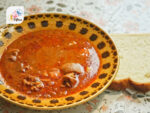


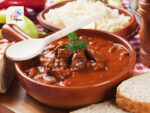
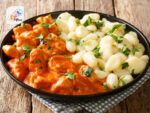




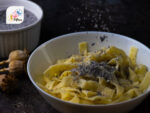

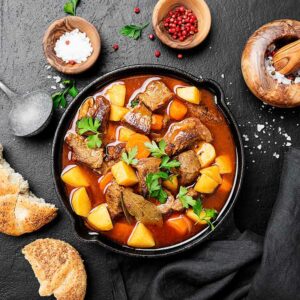
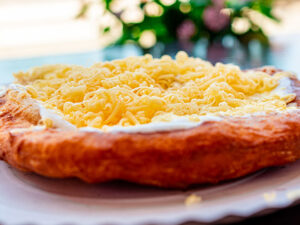
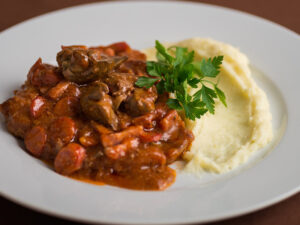
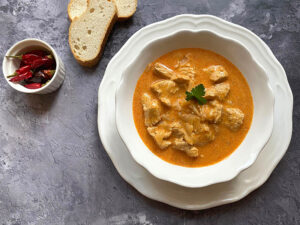
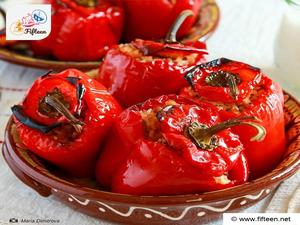
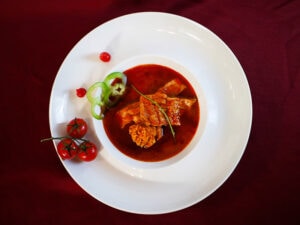
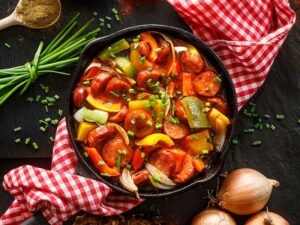
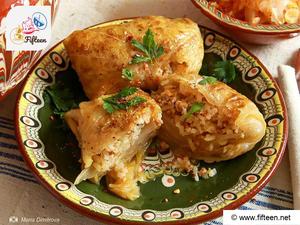
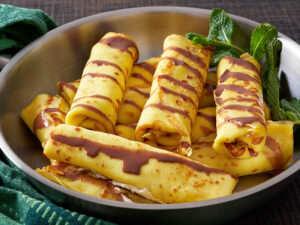
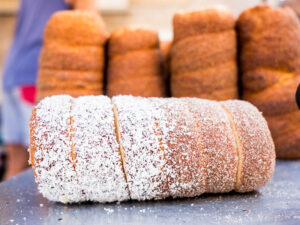
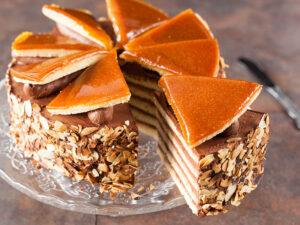
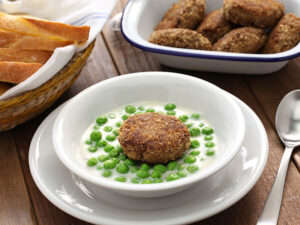
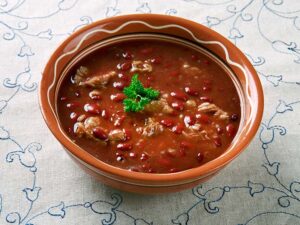
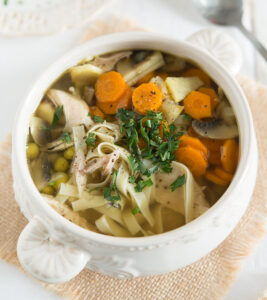

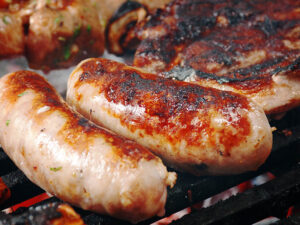
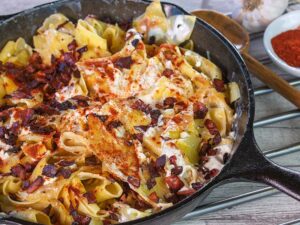
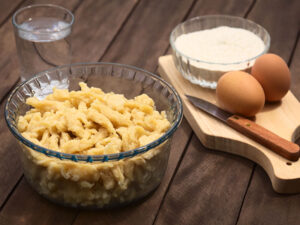
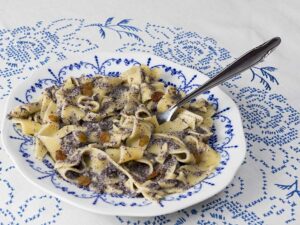
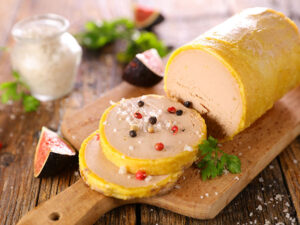
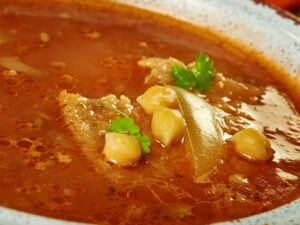


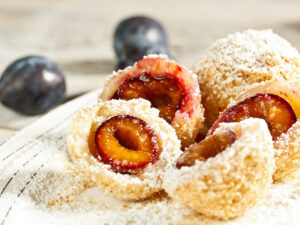

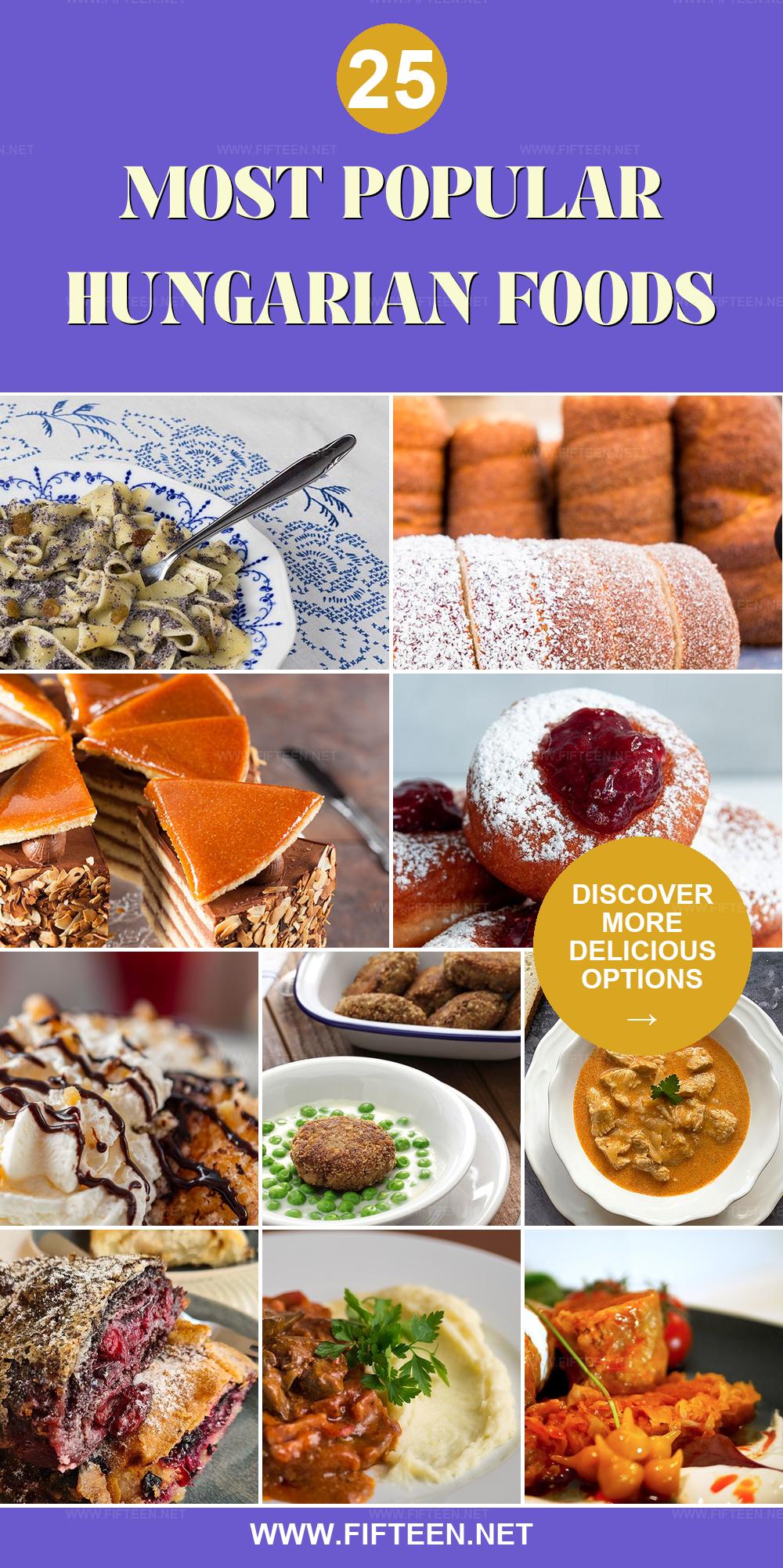
Jamie Scott
Editor in Chief, Senior Content Writer
Expertise
Home Cooking, Meal Planning, Recipe Development, Baking and Pastry, Food Editor, Cooking-video Maker, Western Food Evaluation Expert
Education
Le Cordon Bleu College of Culinary Arts
Local Community College, New York, NY
Jamie Scott is a skilled culinary expert and content creator specializing in Western cuisine. With over 15 years in the culinary field and formal training from Le Cordon Bleu, Paris, Jamie deeply understands how to blend nutrition with delicious flavors. His passion for cooking matches his commitment to making healthy eating accessible and enjoyable.
On Fifteen.net, Jamie brings a fresh perspective to classic dishes and beverages, offering readers insightful recipes, cooking tips, and a fresh view on meal planning that emphasizes taste, health, and simplicity.